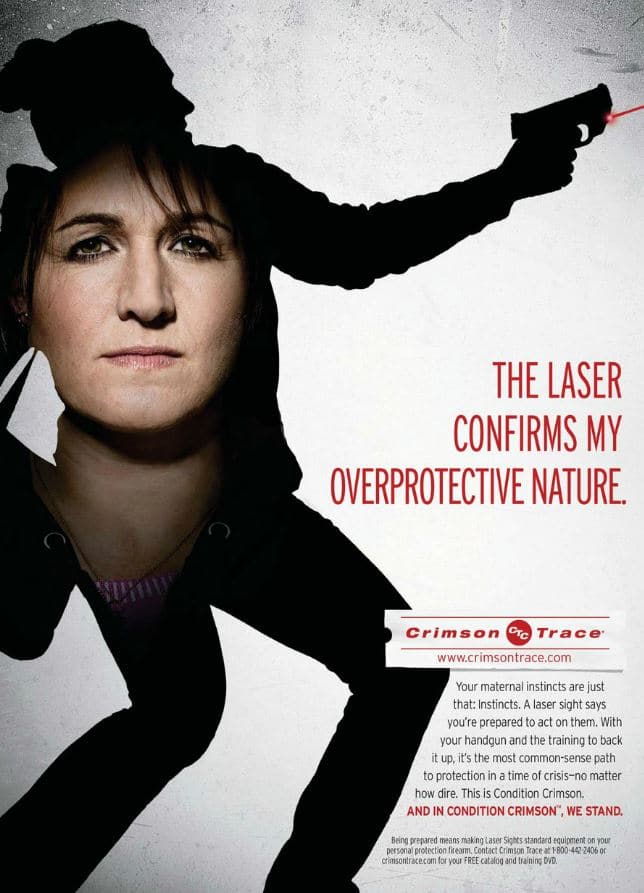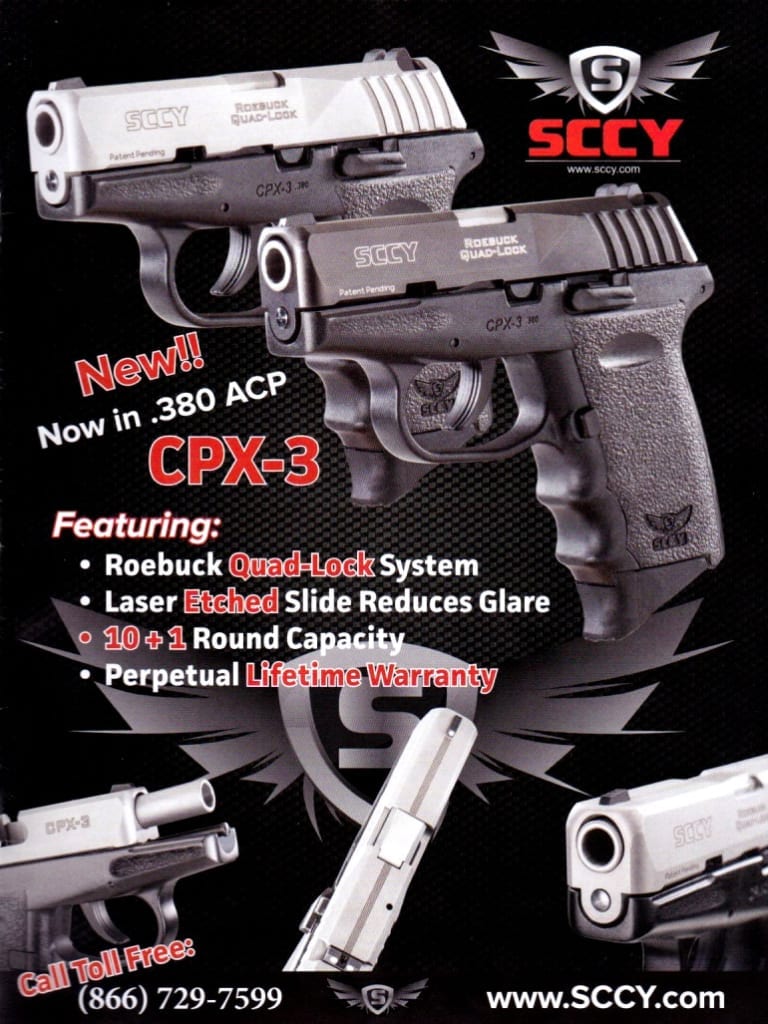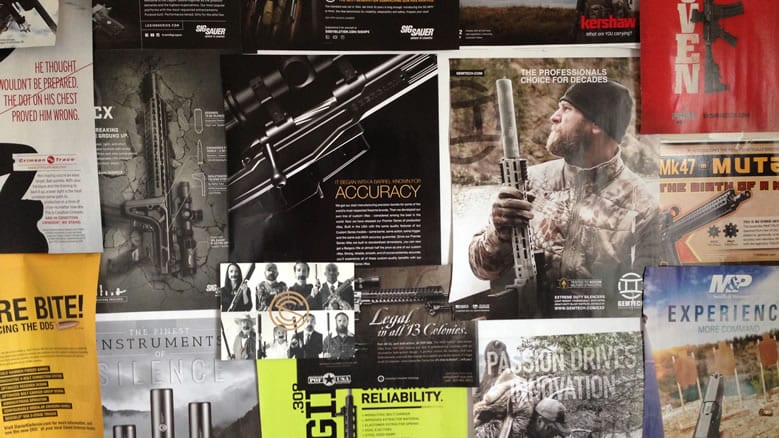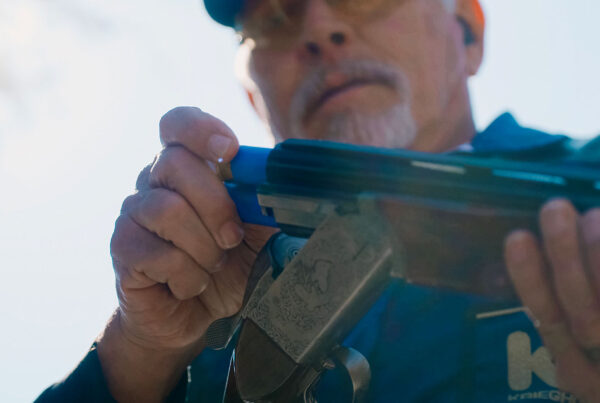
In recent years, print advertising across all industries have taken a hit. Advertisers are increasingly allocating more of their budgets to online ads and content at the expense of TV and print media.
While TV and online ads will continue to dominate the global ads market, print ads will be relegated to the last spot and have the smallest share in the advertising industry. (Source: Trefis)
Print is also expensive. The average full-page ad in Deer and Deer Hunting can run you $7,975 and for good reason. The quality of content by these publishers as well as the magazine’s reach can’t be beat and are still proven to be viable channels. But, how many times have you placed an ad with high expectations only to see your efforts vanish into thin air?
If you’re struggling or are considering placing an ad to increase sales or build brand awareness, I’d like to share with you five ways to make your firearm or hunting advertising more compelling and how you can tie those efforts in with your inbound marketing efforts to track effectiveness and ROI.
 1. Use an interesting concept
1. Use an interesting concept
As important as photography is, you can make your ad much more efficient by integrating a brand concept into the design to make it more interesting. Take a moment to think about your brand and the value it provides to your customer. Is there a way to incorporate those values or benefits into your spread that not only showcases your product, but that also invokes an emotion to make your advertising more memorable. As the old saying goes, “People may not remember what you said, but they will remember how you made them feel.”
A great example is Crimson Trace. They use a serious face inside a silhouette of a person using a laser in self-defense. They then communicate the mindset of their customer through the copy.
Use Storytelling To Breakthrough
Story is a sense-making device used since the dawn of time to communicate—our brains are hardwired for it. Used properly, story will give you an edge over your competitors ads—even if their product is better. The reason why story works so well is that it cuts through the clutter and distraction of today’s cute and clever headlines and clearly communicates the benefits of your product’s benefits without all the fluff. Too many brands play the hero, when they need to be playing the guide. This helps your customer understand your offering faster and helps them become something better e.g., a better marksman, more accurate, more aware, savvier or in some cases more advanced.
2. Go beyond features and talk more about benefits
If you page through any firearms or hunting magazine almost all of the advertising is based on features. Don’t get me wrong, features are paramount, because they represent the manufacturer’s approach to solving a problem, but the problem is, everyone does this. Everyone says their product is superior, the best, most accurate, most durable or is the next big thing. And while that may be true, your biggest competitor isn’t the other manufacturer; it’s the clutter of “me-to” products in the marketplace.
To go beyond the features, you have to determine how your product will benefit the customer, and how this aligns with your brand’s positioning and the intrinsic characteristics of your buyer persona. How will your knife perform when you’ve downed an Elk back in the dog hair—and it’s getting dark? Does the color of your knife’s handle or the strap on your head-mounted light solve this problem? Does your backpack make it easier to pack out without the hindquarter sliding all over the place?
Communicate the reasons why you built lightweight materials into your stock and hand guards. Tell them why less weight for the operator hiking 20 miles up Korangal valley in Afghanistan help them to go further that contributes to the success of their mission. Show these advantages in your advertising. Seek to connect the features with real-time application.
3. Create tension
Today’s consumer has seen it all, and they’re less likely than ever to notice even your masterpiece of art and copy, let alone internalize it. Your job is to craft a piece that rises out of the noise to make an impact. (Source: Luke Sullivan)
In his book, “Hey Whipple, Squeeze This”, Luke Sullivan explains the importance on drawing from highly emotional concepts to help customers remember your brand by creating tension or conflict.
In an ad placed on SilencerCo.’s website—they combine the oppressive event of the Tiananmen Square protests of 1989 with their goal of communicating legal ownership of suppressors and that we (the public) are being suppressed (stoking the emotions of us red-blooded patriots) from purchasing silencers and that we should stand up for our rights. Combining this imagery with their branding creates a highly, emotional and thought-provoking ad through the use of tension.
4. Use faces
One of the first things we focus in on when we are born is the faces of our family. This isn’t just because they are always around in those first few weeks. The brain has a specific circuit for recognizing faces called the fusiform gyrus, or the fusiform face area. We are hard-wired to respond to faces. In the ads below, what ad are you most drawn to? (Source: Canva)
5. Track for measurement and ROI
Lastly, if you can’t track it, what’s the point of advertising? The answer is likely because companies are now used to understanding what their dollars are doing. When print, TV and billboards were the primary ad spots, attribution was not an easy task. But today, companies have built a habit of understanding how much revenue is generated by their ad spend dollars thanks to the Internet and Google Analytics. (Source: Small Biz Trends) With thousands of dollars invested, it makes sense to try to track your communication. Here are a few ways to do so:
• Create a vanity URL and place it in your ad and use Google Analytics to measure
• Create a QR code!
• Offer a free downloadable offer like an ebook or whitepaper to generate leads
• Offer an incentive like a giveaway to generate leads
• Create a special call in or vanity phone number
By implementing print ad tracking you’re reducing the amount of traffic that is wrongly classified as Direct or Organic search and gaining insight into how your different print efforts are working. With this practice, you will be beyond most companies who do print advertising with little understanding of how their ad performs. (Source: Small Biz Trends)
So to wrap up, use interesting concepts, go beyond just features, create tension, use people’s faces and track your print efforts to understand if your advertising is effective. By taking these extra steps, you can create more compelling advertising and make better marketing decisions.









Nice piece on advertising (I think your “5 Ways” are applicable to all advertising, not just firearms and hunting).
The information on “faces” and the region of the brain associated therewith is quite interesting – and I was drawn to the ad with the bearded man’s face immediately when I looked at the montage you provided – good stuff.
Keep up the great momentum with your blogs and your valuable advice – thank you.